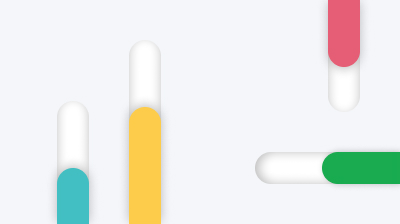AGIA Affinity used Liferay to improve and customize individual client sites to deliver the best experience to policyholders and insurance member benefit organizations.
AGIA Speeds Up 300+ Client Websites' Time to Market
30%
Less Time Required
30 Mil
Members served by AGIA
300+
Client Websites Developed
Outline
Jump to Section
Key Takeaways
- Improved site usability and added functionality which reduced calls to customer support and ultimately enhanced the overall customer experience.
- Alleviated the burden on IT resources by making every site manageable and customizable by even junior level marketing employees.
- Reduced time needed to develop sites from weeks to days and cut time needed for updates from days to hours.
- Completed the entire project in just nine months, including improving customer experience and rolling out over 300 sites.
Background
For more than 60 years, AGIA Affinity has provided administrative and marketing services for some of the largest insurers and member benefits associations and organizations in the country. The company serves 100 affinity groups representing 30 million members across the United States.
Challenges
AGIA Affinity offers insurers and member benefits associations and organizations with over 300 customized self-service portals that policyholders can use to review their policies and perform common transactions such as paying premiums. However, AGIA Affinity's existing SaaS-based administrative system and portal were not flexible and did not allow the company to deliver the user experience customers were demanding.
- Meeting increasing user expectations for simplified UI and modern functionalities. This included the ability to set up recurring payments at a user-specified frequency, employ modern wallets, download policy documents, as well as view coverage, plan, and benefit information.
- Maintaining existing architecture was costly and inefficient as the number of sites grew. The company had minimal ability to customize content for each of their sites. Greater customization would facilitate communications between the insurer/member benefits organization and their policyholders/membership, as well as enable AGIA Affinity to promote its services to clients and members.
- Building a responsive site to respond properly to user behavior on any device under a tight deadline.
Implementation
AGIA had already been using Liferay for back-end data management on the site and decided that Liferay’s capabilities would position the organization to better solve their user experience challenges.
They selected CIGNEX Datamatics as the implementation partner, as their technical skills complemented AGIA’s in-house development skills. Together, they built a proof-of-concept and identified the necessary development processes and technology stacks.
They selected CIGNEX Datamatics as the implementation partner, as their technical skills complemented AGIA’s in-house development skills. Together, they built a proof-of-concept and identified the necessary development processes and technology stacks.
Liferay Solutions
Ready to see what Liferay can do?
AGIA leveraged many of Liferay’s out-of-the-box capabilities including:
- Headless functionality in DXP 7.2 with React for UI. The team could decouple development of the front-end UI from backend web services that were necessary to deliver data to the UI. This meant two separate teams could develop the backend web services and the frontend UI in parallel. Liferay also supports Agile methodology, which allows AGIA to work on both simultaneously.
- Multitenancy for parent/child relationship between different sites. AGIA was able to create a single portal and then replicate that content to over 300 client sites. When necessary, any changes to the parent site can also be applied instantly to all child sites. At the same time, individual sites can be easily customized at the child level.

Results
AGIA Affinity was able to successfully complete the entire project in just nine months. The partnership with CIGNEX helped to ensure few scope changes and effective project management development and deployment, resulting in much faster development time than previous projects.
- Improve site usability. Not only have customer comments been positive, increased adoption has resulted in fewer phone calls to customer support.
- Reduce maintenance and support costs by making sites easily customizable, even by a non-IT team member. In the past, if marketing wanted to make a change to a site, they’d have to rely on costly IT resources. Now an entry or mid-level marketing person can make changes themselves. These changes can be completed in hours instead of days, resulting in lower maintenance and support costs.
- Accelerate time-to-market. Using the Agile methodology and Liferay multitenant technology that decoupled the front and backend, AGIA was able to perform much of the development in parallel. In addition, parent/child capabilities that allowed child sites to inherit functionality from the parent enabled AGIA to reduce the time it took to roll out individual client sites from weeks to days. It took just nine months to roll out the entire implementation with 300+ sites.
With its new site, AGIA Affinity now has the flexibility they need to create individualized sites that meet the needs of each customer while providing easy-to-use self-service for end users that meets their functional requirements.
About CIGNEX Datamatics
CIGNEX Datamatics, a subsidiary of Datamatics Global Services Ltd., is a Michigan based global consulting company offering solutions & services on Open Source, Cloud and Automation. CIGNEX Datamatics has been a Liferay Partner since 2006 & has delivered 350+ Liferay based solutions to clients across various verticals across the globe. They have a team of 130+ Liferay consultants (including DXP, Cloud & Commerce certified experts) & have authored 7 books on Liferay best practices.





